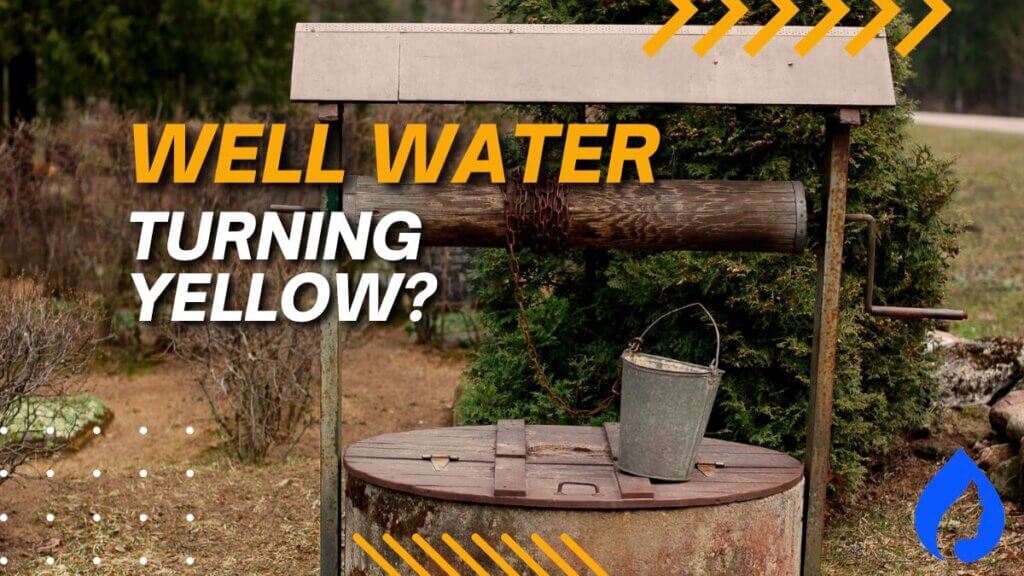
In today’s guide, we will dive deep into the 6 main causes behind why your well water is turning yellow.
To summarize, a yellowish tint in your well water may indicate one of many issues, including rust, iron bacteria, or tannin contamination inside the system.
To fix such water, you must first identify the source of the water coloration through a TapScore test. The test would tell you everything about the problem – which you can fix with our detailed guide.
Read ahead to know the reasons and solutions for yellow well water.
🔎Why Is My Well Water Yellow All of a Sudden [Fixed!]
| Reason | Is It Common? | Is It Easy to Fix? | Troubleshooting | Time Needed for Repairs (Approximately) |
| Iron and Manganese Contamination | Very Common | Slightly Challenging | Test your water and invest in iron filters. | 15 days |
| Rust In Water Pipes, Heater, Faucet, or Pump | Very Common | Challenging | Identify rusty parts and replace them. Install iron filters/softeners. | 20-30 days |
| Bacterial Contamination | Common | Quite Challenging | Conduct a water test and install an apt filter. | 12-15 days |
| Tannin Contamination | Slightly Common | Average | Conduct water tests and install a carbon filter. | 12-15 days |
| Use of Fire Hydrants | Not As Common | Easy | Run the faucet for a few minutes. Conduct a water test to install the filter if not solved. | 1-7 days |
| Broken Pipe | Common | Slightly Difficult | Identify the burst pipe and get it repaired. | 4-10 days |
Also Read: Top 5 Iron Filter For Well Water In 2024
Let’s look at each one of these aspects one by one:
🤢Iron And Manganese Contamination
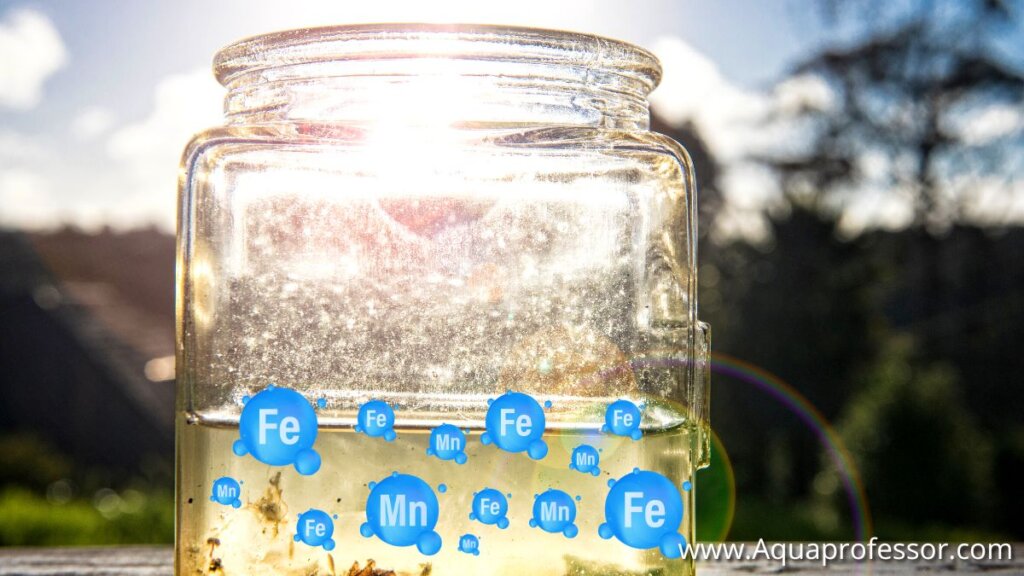
Iron and Manganese contamination are among the most frequent issues in private wells. Since ferric iron doesn’t merge well with water, it settles in your well and begins the process of rusting. The rust transforms the color of the water, and you will notice a metallic taste in it.
Iron contamination often makes the water darker with time, which can be easily witnessed. So, if you see a change in the water’s color with time- the oxidization is still happening.
✅How To Fix the Problem?
The first step in most of these problems is testing your drinking water. Tests like the TapScore Extended Well Water Test require you to pack and send a sample that gets examined by the lab. Through it, you would get accurate results indicating whether you have high levels of iron contamination.
Then, you can use methods like the magnesium rod method to minimize damage. You could also have an expert look at your softener to see if it’s doing its work well or not. If not, replace it immediately with a new one to avoid tough brown stains.
Also Read: How To Remove Manganese From Well Water
🙅♂️Rusted System
Rust in the system is another common problem people face in private wells. Unfortunately, the pipes, faucets, and many other parts may be the victim of such rust, which affects ferrous iron levels in the water. Thankfully, you can get the problem fixed with some effort and avoid it for a long time.
✅How To Fix the Problem?
Don’t worry much about the rust– it is bound to happen in the presence of iron minerals.
Start with a TapScore test to ensure that it is indeed rust causing all the above issues. Once you’ve confirmed it, you can ask a professional to look for the rusted parts or do it yourself. If the water is clean in the tank and yellow from the outlets, it’s the outer pipes or faucets with the problem.
Similarly, identify the part, and replace it with a new one. Next, check your water softener and wait for some time for soft water. Then, the rusty water would clear up as the source of yellowish-tint got removed.
Also Read: 7 Ways To Remove Iron From Well Water
🦠Bacterial Contamination
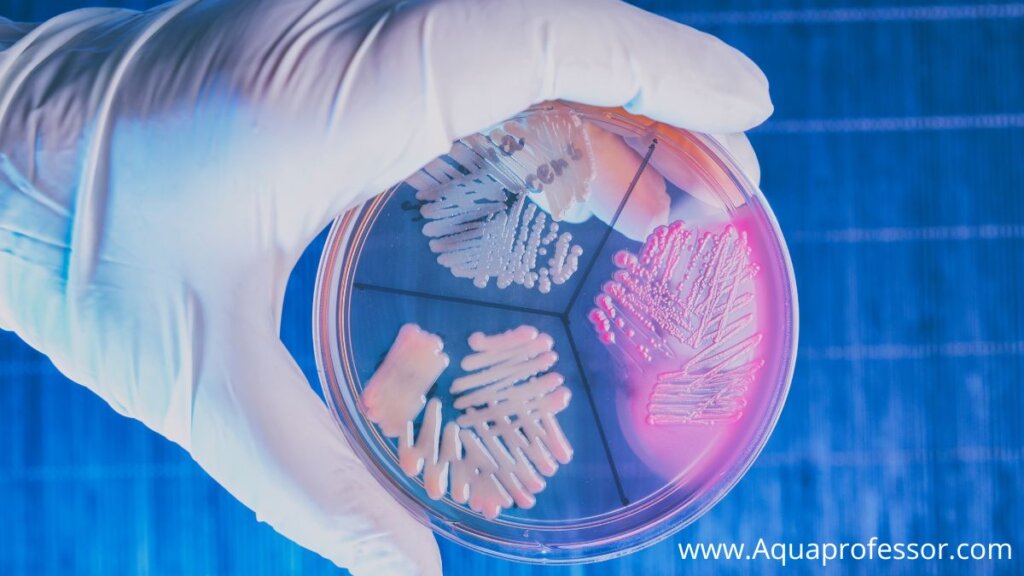
The most frequently occurring bacteria in well water is iron bacteria. Iron bacteria aren’t bacteria with iron- but those who feed on iron deposits. They can create sludge, causing discoloration and yellow stains.
✅How To Fix the Problem?
A Yellow Tap Water test by TapScore can help confirm the presence of bacteria. All bacteria aren’t as harmful as others on the list, but you should still remove them. Once you get the test results, look for an expert in your area for a full-fledged cleansing of your well.
Avoiding the problem may lead to sludge deposits inside essential parts of your system. In addition, it would lead to more hefty repairs later, so fixing the problem as early as possible is essential.
🌿Tannin Contamination
Tannins are organic materials responsible for fermentation found in groundwater and natural sources. If these common contaminants enter your well, they may cause your water to look yellow and have an unpleasant taste. They aren’t harmful to you per se, but they’re not entirely pleasant either.
✅How To Fix the Problem?
You can opt for the same test as for bacterial contamination to identify tannins. Leaving tannins in your water may lead to yellow staining wherever the water reaches. You can identify the peaty soil leading to this and block the source of these secondary contaminants.
You can install a filter to filter out these tannins regularly, and the yellow tint should clear up.
Also Read: 7 Reasons Why Well Water Is Black
🔥Use Of Fire Hydrants
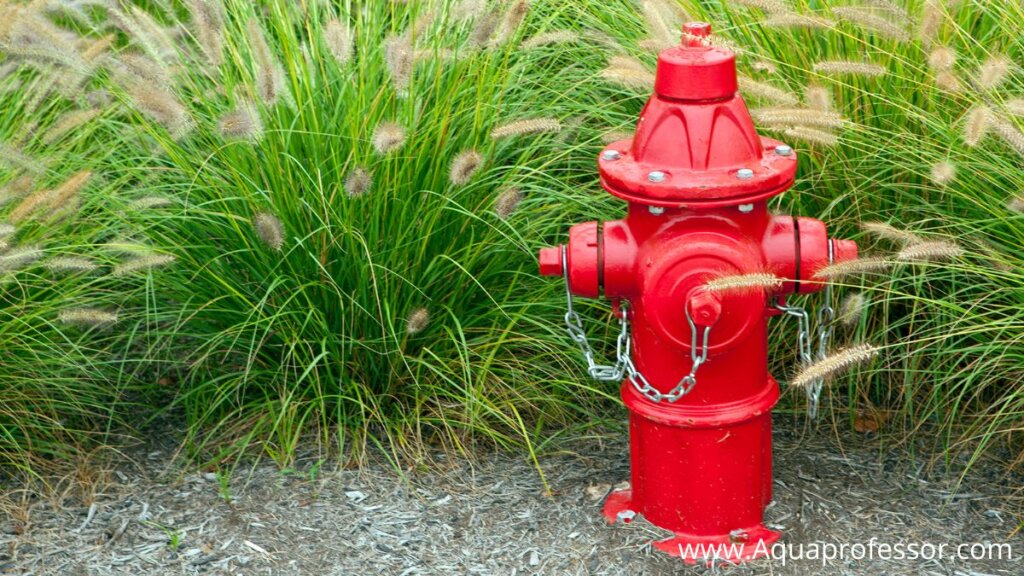
When there is an emergency in the local area, the fire department utilizes local water sources to curb it. While doing so, the water flow fluctuates and causes sedimentation in pipes. This sedimentation causes yellowness even in public water for the time being.
✅How To Fix the Problem?
Fire hydrant use is only for a given situation and usually lasts a few hours. After it stops, the water should go back to normal in some time. However, while doing so, the water pressure fluctuates and causes sedimentation in the water lines.
Also Read: How To Improve Well Water Recovery Rate
👎Broken Pipes
Broken pipes cause external impurities and groundwater to enter the water systems. It is usually harmless content like tannins, but sometimes the problem may be graver. Pesticides or chemicals may enter your water through such pipes, needing attention.
✅How To Fix the Problem?
Firstly, you should fix the broken area by calling an expert and checking all the seals. Once you have ensured no external components can enter your water, you can opt for a TapScore test. It will help identify the right culprit and let you choose a treatment for it. You may need plumbing fixtures or even replace the entire pipe if it is too damaged.
🤔Why Is My Well Water Yellow After Heavy Rain [Read Before Drinking]
| Reason | Is It Common? | Is It Easy to Fix | Troubleshooting | Time Needed for Repairs (Approximately) |
| Surface Water Infiltration | Very Common | Slightly Challenging | Perform a test to confirm the reason and use sealing caps to stop the infiltration. | 15 days |
| Contamination From Nearby Septic System | Common | Slightly Challenging | Use a TapScore test to identify the issue and use filtration and sealing methods to curb the issue. | 5-10 days |
💦Surface Water Infiltration
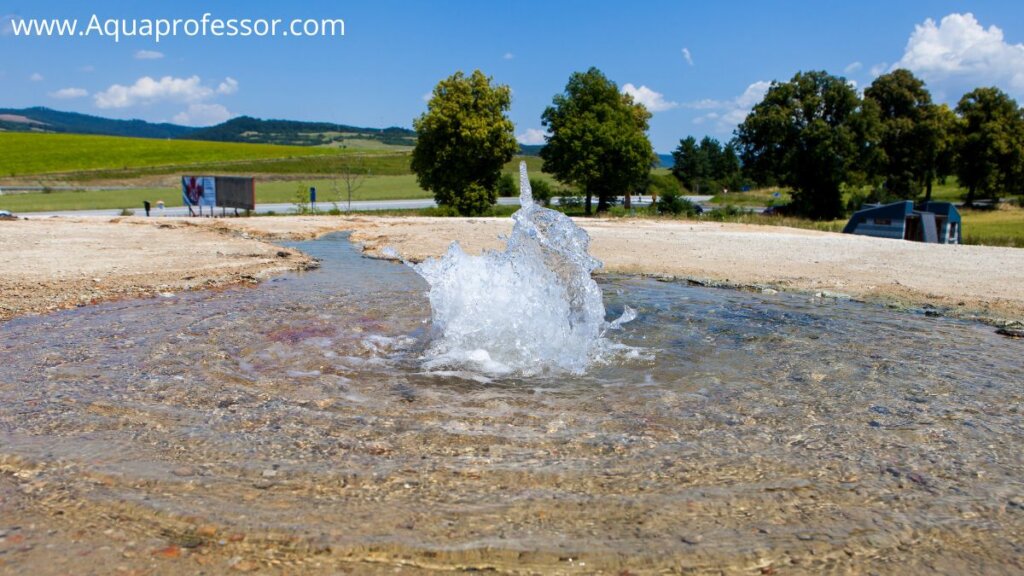
Heavy rains can cause groundwater levels to rise. This water enters the well through an opening in the system or a loose sealant, giving yellow color to your well water. This water is extremely dangerous as it may contain anything from pesticides to harmful chemicals and bacteria.
✅How To Fix the Problem?
Since your water has a risk of pesticide contamination, you can go for a Pesticides Water Test by TapScore. The test will identify the presence of pesticides or harmful chemicals in the water.
Next, check for any cracks or leaks in your system which may be the source of such infiltration. Once you have fixed any such opening, you must call an expert to conduct in-depth water cleaning through various treatments. It would ensure the proper removal of all harmful elements from the water.
😢Contamination From Septic System
If your well is nearby a septic system– the contamination may come from there too. However, septic system contaminations are far more alarming as they contain harmful bacteria like E. coli. It can cause severe damage to the human body after some time.
✅How To Fix the Problem?
Opt for the RUSH: Coliform and E. coli Water Test by TapScore to identify such bacteria. Once you confirm the coliform bacteria, you can immediately call a water treatment professional to inspect. This process would require time and money, but it would ensure your safety.
They would stop the leaks, sanitize the tank, and clear the water to make it safe for consumption again. It is an essential investment to ensure good health and well-being. Install bacteria filters or continue regular maintenance to ensure the bacteria do not return.
😨Can Yellow Water Make You Sick? [Drinking or Bathing]
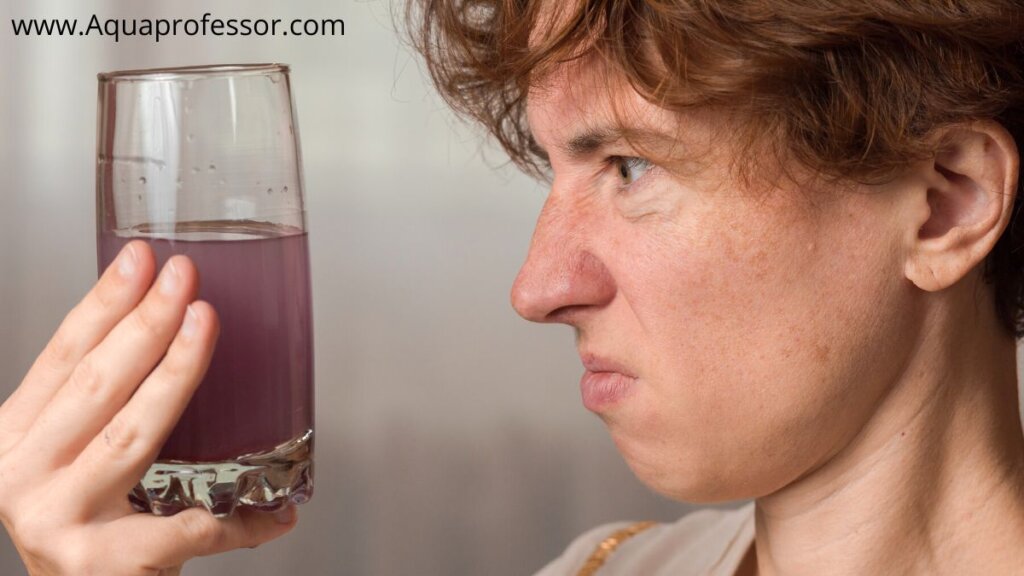
One of the frequent questions of private well owners is whether the water that turned yellow is still safe to consume.
Firstly, water turning yellow isn’t due to a single factor, but various aspects. Until you perform a test from TapScore, you cannot identify the problem.
Secondly, while most problems like rust and tannins are harmless, some are not. What if you have a septic tank contamination instead? Hence, it is always best to refrain from using yellow water.
Here are some points to remember:
👨🏫Why Is My Well Water Yellow FAQs

Why is my toilet water suddenly brown?
If your toilet flush water has a brown or yellow hue, it might be due to rust in your municipal or well water supply. First, check whether the brown water is limited to your toilet or is the same in other outlets.
You can identify the source of the rust and call a professional to replace the parts. You could then invest in a filter to remove any further traces of the iron already in your water.
Can a water softener cause yellow water?
If you’ve noticed a yellow hue just after you got a water softener, it might be due to the following reasons:
1. Air bubbles trapped in the pipes may cause the water to look yellowish and abnormal.
2. Iron content in the water rusts and changes the water color.
If the water doesn’t clear up on its own in some time, you can use a TapScore test to determine what’s causing it.
How do you fix yellow well water?
1. The first step to clearing your water is identifying what’s causing the colored water.
2. Use a professional testing kit to get the most accurate results.
3. Once you’ve understood the problem, you can fix the system by replacing rusted pipes or sealing any cracks.
4. Finally, you can install a water filter to clean your water and make it safe to consume again.
Why does my well water get yellow upon heating?
Hot water comes from heaters, which often have the same problems as water from wells. You might find a yellowish tint in your hot water – probably because of iron or bacteria in the water heater.
As we suggested, you must remove any rusted parts that cause the problem. Then you can clear out the cold water and refill the heater to curb the issue.
Will yellow water go away?
Differing from the source of the problems, sometimes yellow water does fix itself. If it’s a temporary problem like fire hydrant use – it will return to normal in a few days.
However, if it does not get fixed, you must take action. Though the water may not be immediately damaging, long-term exposure to such water may pose a health risk.
Adarsh is a Health & Nutrition Sciences graduate with expertise in environmental health. He is associated with ventures like Glacier Fresh Filter and Simpure Filter Systems. Through Aqua Professor, he intends to provide helpful information to every home to help them make smarter decisions.

I am a renter of a cabin with both hot and cold well water coming underground from the main house several yards away. I’ve been told the water contains arsenic and not to drink it, so I buy bottled water for cooking and tea etc. However, I still shower in it.
We had a deep freeze recently so I had to leave the taps running continuously, and I now have fairly bright yellowish orange stains on the ceramic basins. Kitchen ss sink seems okay. Now I worry about using that water on my skin. I’m showering less frequently, have no tub so no soaks, and I’m now towel-drying myself immediately rather than air drying.
I have no power over my water source and already have the extra expense of bottled water. Are there any other minor steps I could take for safety? Or should I make noise…? Your informed opinion is very welcome, please.
Hey Louise, those yellowish orange stains are because of iron and not arsenic. It’s better to not bathe in that water as it can dangerously irritate your skin. Consider testing your water in a local lab and install iron and arsenic filters to ensure you can safely drink and bathe.